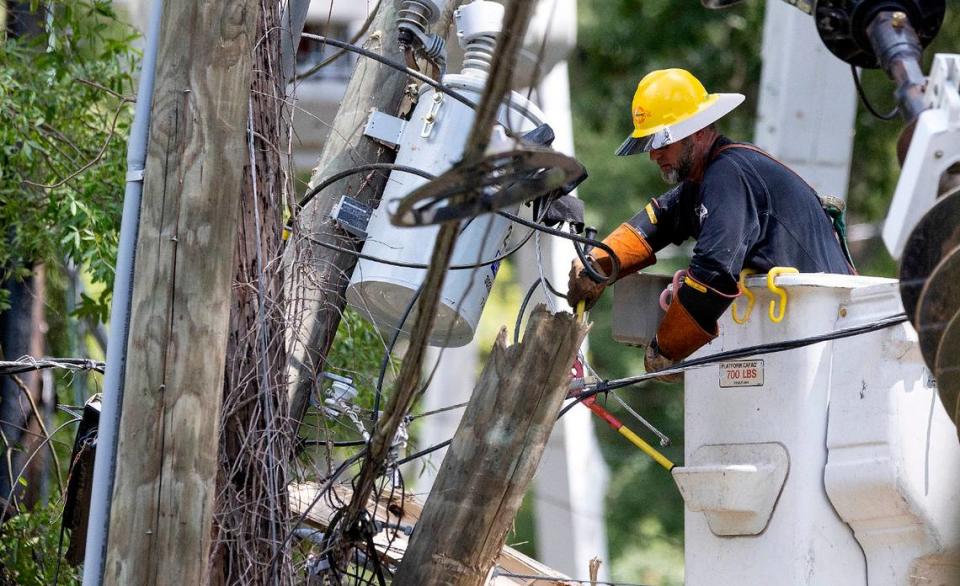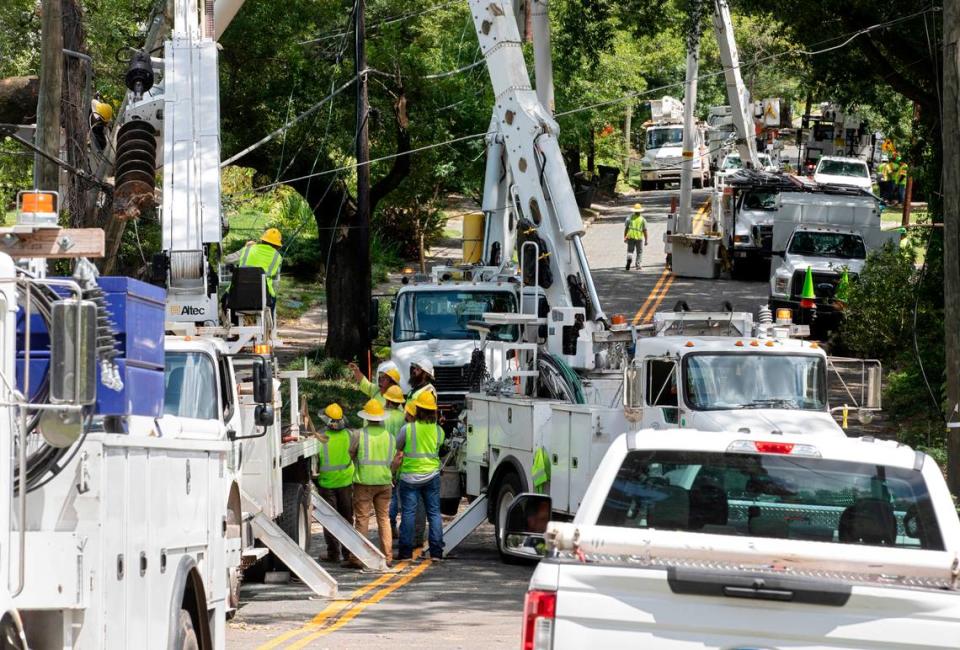Why is the power still out? And answers to other questions about storm recovery efforts
Two days after fatal thunderstorms ripped through the Triangle, thousands remain without power.
Despite initial estimates that power would be restored by Wednesday evening or early Thursday morning, the excessive damage has slowed crews.
Here’s what to know about ongoing storm recovery efforts:
How many people are without power?
Here’s how many Duke Energy customers lacked power as of 9:30 a.m. on Thursday, according to a Duke Energy outage map.
Durham County: 9,658
Orange County: 67
Wake County: 311
Johnston County: 6
Which areas were hit the hardest?
Durham was hit particularly hard by Tuesday’s storms. The area sustained winds of up to 53 mph and gusts of up to 72 mph at the National Weather Service’s Durham-Chapel Hill station. The temperature at Raleigh-Durham International Airport hit a daily record of 100 degrees, inching past the previous high for an August 15 of 99 degrees, recorded in 2007.
On Tuesday evening, at the height of the storm, a Hillsborough woman was killed after a tree fell on her car in Durham.
More than 60,000 customers lost power across the Triangle, and most outages were in Durham, where many sections are still without power.
Durham Public Schools canceled classes for multiple days for students in year-round and specialty schools.
What areas still don’t have power?
As of Thursday morning, more than 9,000 Duke Energy customers are still without power in Durham. The most recent outage map shows the majority of those without power are in northeast Durham. More than 5,000 customers remain without power between Old North Durham and Falls Lake.
There are also about 2,000 customers without power just west of downtown Durham. The current outage area includes Duke University’s main campus.
Why is it taking so long to restore power?
The storm that hit Durham County “was like wind bomb,” Duke Energy spokesman Jeff Brooks said. “It went off, and it caused a lot of damage.”
In situations where storm damage is hyper-localized, additional crews often need to be dispatched from across the region.
Additional crews from around the Carolinas arrived Wednesday to repair damaged trees, power lines and poles, he said, plus about 1,000 line and tree workers. About 600 were dispatched to Durham, while the rest spread across three counties, from Greensboro to Chapel Hill, he said.
They are now in what they call the “grind,” Brooks said, when small outages of 30 to 50 customers remain, but each repair can still take several hours. It’s also not uncommon for property owners to see their lights flicker or briefly gain power, only to lose it again, he said. That’s because the necessary repair may not be obvious, or the crew may have another problem elsewhere affecting the grid, he said.
Some areas also may have more damage because of trees weakened by an Aug. 7 storm.
“It’s frustrating. You get excited, you see the crews there, and they finish repairs and they turn the power back on and it comes on and then comes back out,” Brooks said.
“What we’ve seen here in Durham County in particular is just a tremendous amount of physical damage to the grid. Big trees that are down on the lines and causing a lot of broken poles and lines on the ground.”
When will power be restored?
Most Duke Energy customers still without power should see it restored by Thursday evening.
Durham County: Thursday by 6 p.m. Orange County: Thursday by 6 p.m. Wake County: Thursday by 6 p.m. Johnston County: Thursday by 10:30 a.m.
“Technicians worked through the night to repair damage caused by yesterday’s storm,” a message on Duke Energy’s outage map stated. “As work wraps up in areas not significantly impacted, crews will travel to the regions hardest hit to assist. In particular, the counties of Durham and Guilford will require extra manpower. Additional assessment will be needed in those areas before estimated restoration times are available.”
Tammy Grubb contributed to this report.

